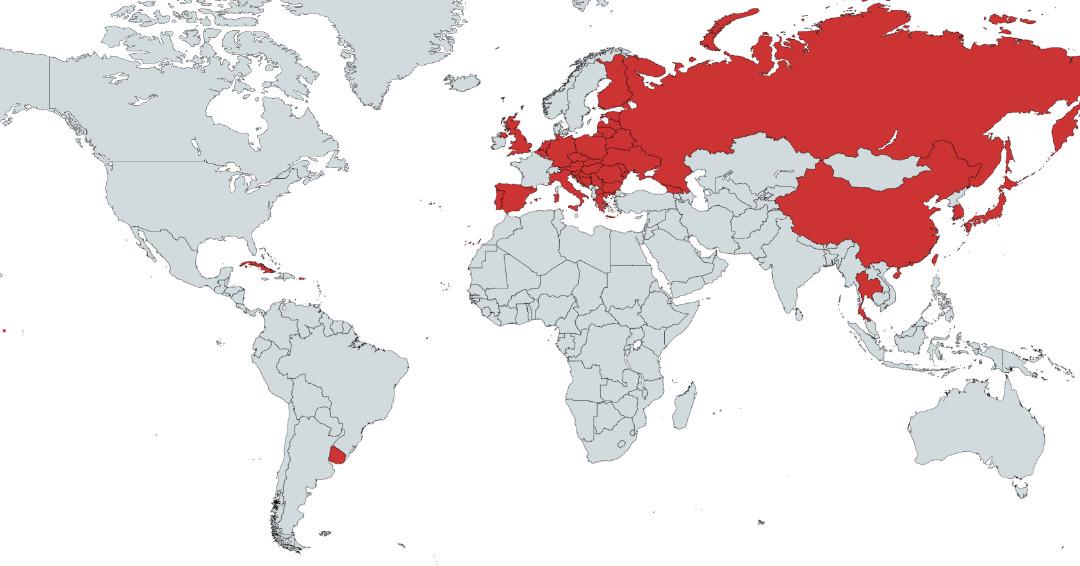Map of Countries with More Deaths than Births 2024


David Chen
Data Visualization Specialist
David Chen is an expert in transforming complex geographic datasets into compelling visual narratives. He combines his background in computer science ...
Geographic Analysis
What This Map Shows
The map titled "Countries with More Deaths than Births in 2024" visually represents a pressing demographic trend that many nations are facing today. It highlights countries where the number of deaths exceeds the number of live births, indicating a natural decrease in population. This situation can arise from various factors, including low fertility rates, aging populations, and significant emigration. Understanding these patterns is crucial as they have profound implications for social structure, economic stability, and future population policies.
Deep Dive into Population Dynamics
Population dynamics are influenced by several key factors, including birth rates, death rates, and migration patterns. Countries experiencing more deaths than births are often grappling with aging populations, wherein a larger portion of the populace consists of older individuals who are less likely to contribute to population growth. For instance, Japan has been a pioneer in this demographic trend, with a fertility rate of around 1.34 children per woman, significantly below the replacement level of 2.1. This has resulted in a population that is not only shrinking but also aging rapidly, leading to potential labor shortages and increased healthcare costs.
Interestingly, this trend isn't limited to developed nations. Countries like Bulgaria and Latvia also showcase similar demographic challenges, with birth rates falling below death rates due to economic instability, emigration, and societal shifts. The map illustrates these countries, providing a stark visual representation of the demographic crisis that affects them. According to the World Bank, Bulgaria's population has decreased by over 10% since 1989, a trend that raises concerns about the future workforce and economic viability.
In addition to aging populations, high death rates can also stem from health crises, such as the COVID-19 pandemic, which exacerbated existing vulnerabilities in certain countries. For example, many Eastern European nations have struggled with high mortality rates due to various health issues, including heart disease and high rates of alcohol consumption. Such factors not only contribute to immediate death rates but also affect the overall life expectancy, further complicating demographic trends.
Regional Analysis
When examining the map closely, one can see distinct regional patterns in the phenomenon of more deaths than births. In Europe, nations like Italy and Germany are notable examples. Germany, with its robust economy, has been experiencing a declining birth rate, prompting the government to introduce policies aimed at encouraging larger families. However, despite these efforts, the natural decrease persists as the older generation continues to pass away without enough younger individuals to replace them.
In contrast, nations in Sub-Saharan Africa typically exhibit the opposite trend, with high birth rates and lower death rates. This highlights a stark demographic divide where countries like Niger and Angola are seeing population growth, whereas many European nations face population decline. The contrasting fertility rates illustrate not only differences in socio-economic conditions but also varying cultural attitudes towards family and child-rearing.
Interestingly, even within regions, there can be significant variation. For example, while Southern Italy struggles with low birth rates and higher mortality, Northern Italy remains relatively stable in its population dynamics due to a more robust economic environment and better healthcare systems. This indicates that economic factors and healthcare access are crucial in understanding demographic trends.
Significance and Impact
Understanding the implications of countries experiencing more deaths than births is vital for policymakers and citizens alike. As these nations confront the challenges of a shrinking workforce, there could be significant economic consequences, including reduced productivity and increased pressure on social services to support an aging population. Moreover, these demographic shifts can lead to increased immigration as countries seek to fill gaps in the labor market.
Furthermore, the social fabric of nations may change dramatically as younger generations are outnumbered by older generations, affecting everything from political representation to cultural norms. Countries will need to adapt their policies to address these demographic realities, whether through encouraging higher birth rates, improving healthcare, or accepting more immigrants.
In conclusion, the map of countries with more deaths than births in 2024 highlights a critical issue that transcends borders. As global demographics continue to evolve, understanding these trends will be essential for ensuring sustainable development and social stability in the future. What does this mean for your country? Are we prepared to face the demographic challenges ahead? These are questions that require urgent attention and thoughtful solutions.
Visualization Details
- Published
- August 16, 2025
- Views
- 86
Comments
Loading comments...